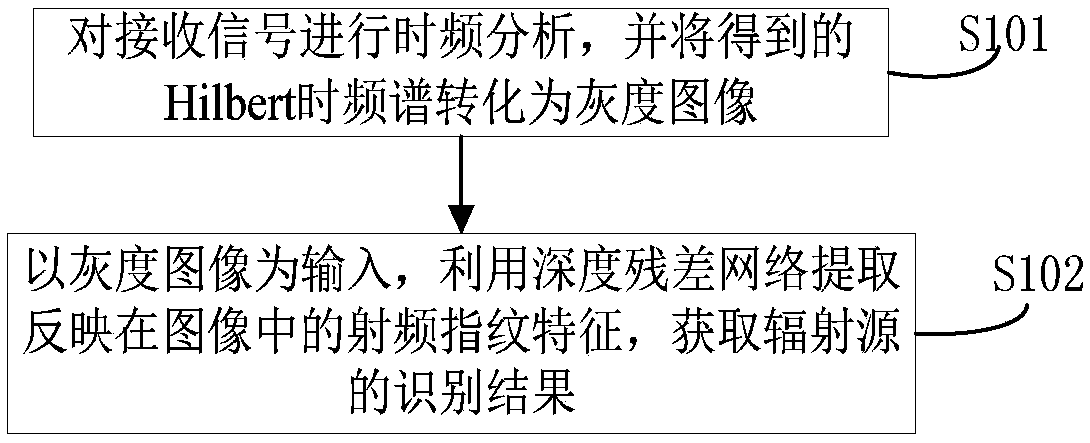A specific radiation source identification method and device based on a deep residual network
An identification method and radiation source technology, applied in the field of specific radiation source identification method and device based on deep residual network, can solve the problems of affecting the identification effect, loss of feature details, unsatisfactory bispectrum feature identification effect, etc., to achieve The effect of improving processing efficiency, strong robustness, and overcoming the limitations of human cognition
- Summary
- Abstract
- Description
- Claims
- Application Information
AI Technical Summary
Problems solved by technology
Method used
Image
Examples
Embodiment Construction
[0031] In order to make the purpose, technical solution and advantages of the present invention more clear and understandable, the present invention will be further described in detail below in conjunction with the accompanying drawings and technical solutions.
[0032] For the non-stationary and nonlinear characteristics of the radiation source signal, in the embodiment of the present invention, refer to figure 1 As shown, a specific radiation source identification method based on deep residual network is provided, which includes the following content:
[0033] S101. Perform time-frequency analysis on the received signal, and convert the obtained Hilbert time spectrum into a grayscale image;
[0034] S102. Using the grayscale image as input, extract the radio frequency fingerprint features reflected in the image by using the deep residual network, and obtain the identification result of the radiation source.
[0035] Specific radiation source identification is a classificati...
PUM
 Login to View More
Login to View More Abstract
Description
Claims
Application Information
 Login to View More
Login to View More - R&D
- Intellectual Property
- Life Sciences
- Materials
- Tech Scout
- Unparalleled Data Quality
- Higher Quality Content
- 60% Fewer Hallucinations
Browse by: Latest US Patents, China's latest patents, Technical Efficacy Thesaurus, Application Domain, Technology Topic, Popular Technical Reports.
© 2025 PatSnap. All rights reserved.Legal|Privacy policy|Modern Slavery Act Transparency Statement|Sitemap|About US| Contact US: help@patsnap.com



